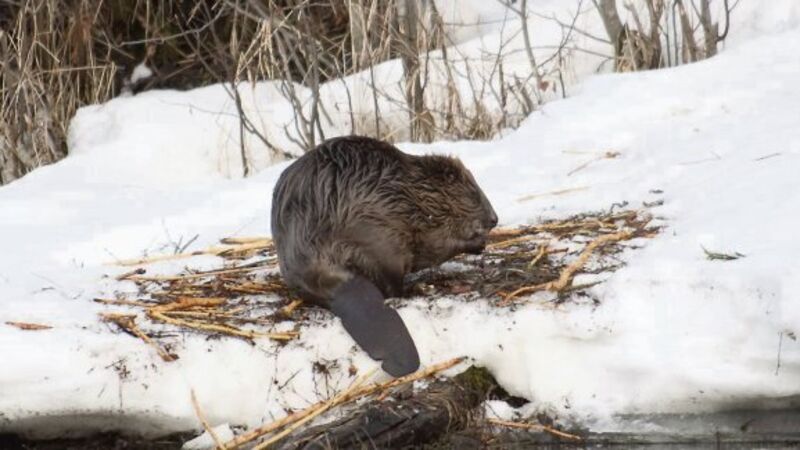Interloper is beavering away

‘Keystone’ species radically alter the ecology of an area. The beaver is the textbook example. This ‘civil engineer’ of the natural world can change an aquatic landscape with the dams it builds and the pools that form behind them. The last beaver in Sweden, for example, was killed in 1871, but alterations to the landscape centuries ago can still be seen.
Beavers have been living wild on an 18km stretch of the Otter for the past five years. Nobody knows where they came from. Captive animals either escaped or were released to the wild. The odds were against their survival but, last year, adults with young were filmed near Ottery St Mary; these illegal immigrants, it seems, are there to stay.
Having beavers in Britain does not appeal to everyone, however. Not all fishermen, landowners and foresters welcome them.
The issue is complicated; the beaver was once native to Britain and, under the Habitats Directive, EU member states are obliged, where feasible, to restore species rendered extinct.
There is, however, a strict protocol governing reintroductions. Animals, for example, must be free of infectious diseases before they can be released. Nobody knows what parasites the Devon beavers may be carrying. Nor has an assessment been made of the long-term impact the beavers might have on the landscape and ecology of local rivers; hopefully, the monitoring programme will provide answers to some of these questions.
Beavers are vegetarians; they don’t eat fish, so anglers shouldn’t worry unduly about their presence. Indeed, it’s been argued that the pools formed upstream of beaver dams add to biodiversity, increasing the range and numbers of invertebrates for fish to eat.
Beaver supporters also claim that the pools act as storage reservoirs, retaining rain-water and reducing flooding downstream. Foresters have a stronger case against the new arrivals; beavers cut down trees by chiselling through trunks with their sharp teeth. The felled trees are dragged into rivers to build dams and a ‘lodge’, the three-tonne mound of branches and other vegetation, with underwater entrances, which is the beaver’s family home.
At the end of the Ice Age, the beaver, the world’s second-largest rodent, lived along rivers throughout Northern Europe. It colonised Britain, but didn’t reach Ireland; no beaver remains have been found here. Much sought-after for its fur flesh and castoreum, a yellowish substance in a scent gland close to the tail, the beaver was hunted everywhere. The sacs containing this smelly secretion, which is used by the beaver to mark its territory, were believed, erroneously, to be testicles. Swallowing castoreum, it was thought, eased fevers, epilepsy and headaches. It was also used to make perfume.
Hunting of beavers became so intense in medieval times that the species was rendered extinct throughout most of northern Europe. Gerald of Wales, writing in the 12th century, claimed that beavers were found along only one river in Wales and another in Scotland. Nevertheless, they survived in Britain into the 16th century. The last reported sighting was at Loch Ness in 1527.
Starting in 2009, four beaver families, 16 animals in all, were released, on a trial basis, to forested wetland in Argyll, Scotland. It was the first legal reintroduction of a native wild mammal in Britain. The new arrivals felled trees, constructing impressive dams, navigation channels and lodges. One dam is 18m long and 1.6m high. At least 14 ‘kits’ have been born. The trial, its organisers say, has shown that beavers can thrive, given suitable conditions, in Britain. Like their Scottish cousins, the Devon beavers may soon become a local tourist attraction.














